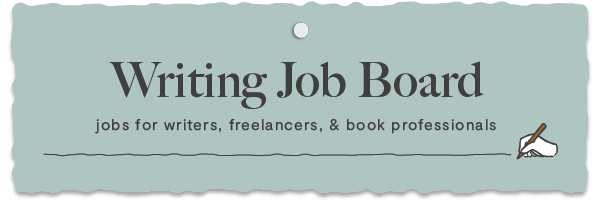How to Land a Remote Writing Job
No commute, no cubicle, no problem. You’re not the only one dreaming of a remote writing job.
The good news? Work from home jobs are everywhere. The bad news?
This means sifting through spammy listings, underpaid content mills, and job boards frozen in time with broken links and outdated posts.
But that doesn’t mean all hope is lost. You don’t need to win the algorithm lottery to land a great remote writing job. You need a niche, a portfolio that proves you can deliver, and a shortcut to real opportunities that value your time and your talent.
While joining a curated list of resources like ✍️ Make Writing Your Job won’t hurt, let’s make sure you’re looking at all the angles so you can plan your perfect approach to a brand new way of working and writing.
Your future job? It’s looking remote, in the best way possible.
Why Freelance Writing Beats the 9–5
Not all remote jobs are created equal. Most still come with full-time expectations. 40 hours a week. One client. A boss who sends you inspirational GIFs instead of actual feedback.
Freelance writing flips the script. You get:
Higher earning potential
Multiple income streams
The ability to work on projects you actually enjoy
Flexibility to take a Tuesday off just because you feel like it
It’s also more secure than it looks. If one client disappears, you’ve got three more lined up. There are no surprise layoffs when you own the business. Just opportunities to grow, pivot, or take a breather for a well-deserved vacation.
Your skill is in high demand. Writing’s not going anywhere. If you need more evidence, check out these 14 remote jobs that are still AI-proof.
Ready for the next step?
Start with Your Niche: Clarity Is Currency
The fastest way to get hired is to get specific. Clients don’t want a generalist, they want someone who specializes in the type of writing they need help with.
Ask yourself:
What kind of writing do I actually enjoy doing?
What industries do I know best?
What kinds of brands or clients do I want to work with?
Here are a few niche ideas to get your wheels turning:
Tech content writing for SaaS, AI, or developer tools
Email copywriting for ecommerce brands
Health and wellness writing with a research-backed approach
Memoir ghostwriting for legacy-driven professionals
LinkedIn content for founders and thought leaders
Picking a niche doesn’t mean you’re locked in forever. But it does help you stand out, and standing out from the herd is what actually gets you hired in this work climate.
Build a Portfolio (Even If You Don’t Have Clients Yet)
No one wants to read your resume. They want to see your writing in action.
Don’t worry if you feel like you’re light on material or don’t know how to organize it all to show your potential. Some of the best portfolios are self-initiated. You only need 3-5 strong samples to stand out and you can start from scratch if needed.
Write a Blog Post That Reverse-Engineers a Brand’s Tone
Pick a brand you admire, one with a clear voice and defined audience. Now, write a blog post as if you were hired to contribute to their site.
Start by analyzing their style:
Are they witty or serious?
Longform or punchy?
Do they use bullet lists? Data? Pop culture references?
Then write a post in that exact tone, on a topic their readers would care about. This proves you can match brand voice, a top skill clients look for when hiring remote content writers.
Create a Content Strategy Teardown of Your Favorite Substack
If you’re subscribed to a newsletter you love, study it like a strategist. Write a portfolio piece that breaks down:
Their target audience
How they structure their emails
What makes their subject lines effective
What kind of content they prioritize (personal essays, curation, education?)
Then share your insights and suggestions. Bonus points if you include how you’d improve engagement or grow their list. This kind of analysis shows off both your writing and your marketing brain: a powerful combo for freelance work-from-home jobs.
Draft a Landing Page for a Product You Love
Love a skincare line, productivity app, or online course? Write a fresh landing page for them.
Focus on clear, benefit-driven copy. Use headlines, subheads, and calls to action that guide the reader toward conversion. This shows clients that you understand persuasive copywriting, formatting, and user psychology; all crucial for high-paying freelance work in ecommerce, SaaS, and more.
Treat it like a real project, because it is one… even if you’re not getting paid (yet).
Repurpose a Podcast Episode into a Crisp, Skimmable Newsletter
Find a podcast with strong content but weak repurposing, and turn one of their episodes into a killer email newsletter.
Pull out key ideas, quotes, or tips, and organize them into a format that’s easy to scan and engaging to read. Add a snappy intro and a clear takeaway at the end.
This proves you can take longform content and transform it into something actionable, a common request in freelance marketing jobs.
Want More Portfolio Strategies?
These strategies work, and one strong sample can be the thing that lands your next job. Hopefully these tips give you a place to start, but if you want to go deeper?
Venture behind the paywall on ✍️ Make Writing Your Job and check out a ClassStack video guide to building the perfect portfolio (and plenty of other video guides and live Zoom classes all about growing your brand).
Where to Actually Find Remote Writing Jobs
You know your niche. You’ve pulled together your portfolio. Now you’re seeking out the writing jobs of your dreams…
Only to find an exhausting slog in front of you. You’re wading through platforms that pay $15 an article. You’re crafting pitches for listings that vanish overnight. You’re three unpaid “sample edits” deep before realizing the client wants free labor, not a real hire.
And even the “good” job boards? They’re often cluttered with full-time roles dressed up as remote jobs, or outdated listings that lead to broken links and ghosted applications.
These are the challenges that turn potential freelancers away from the path and back into the corporate rat race. I knew that pain all too well.
And that heartache led to the creation of ✍️ Make Writing Your Job.
It’s more than just a job board. It’s your freelance assistant, sending you the kinds of remote writing jobs you actually want. The kind that pay well, respect your skills, and give you the flexibility to build a career on your own terms.
Here’s what you get:
🗂️ 5x/week curated listings — freelance-only, remote-only
🔍 No lowball offers, content mills, or “volunteer opportunities”
💬 Daily Subscriber Chat drops with extra job leads and context
🧠 ClassStack archive of portfolio, pitching, and client strategy workshops
✍️ GuestStack commissions — we pay $1/word and prioritize emerging voices
Every posting is reviewed before it goes live. If it’s not worth your time, it doesn’t make the cut. Simple as that. Skip the burnout phase and focus on getting hired.
Whether you’re brand new to freelance writing or scaling toward six figures, the remote writing path is yours to shape. The jobs are out there, and with the right tools, they’re well within reach. You’re not chasing permission anymore.
You’re building something better.

